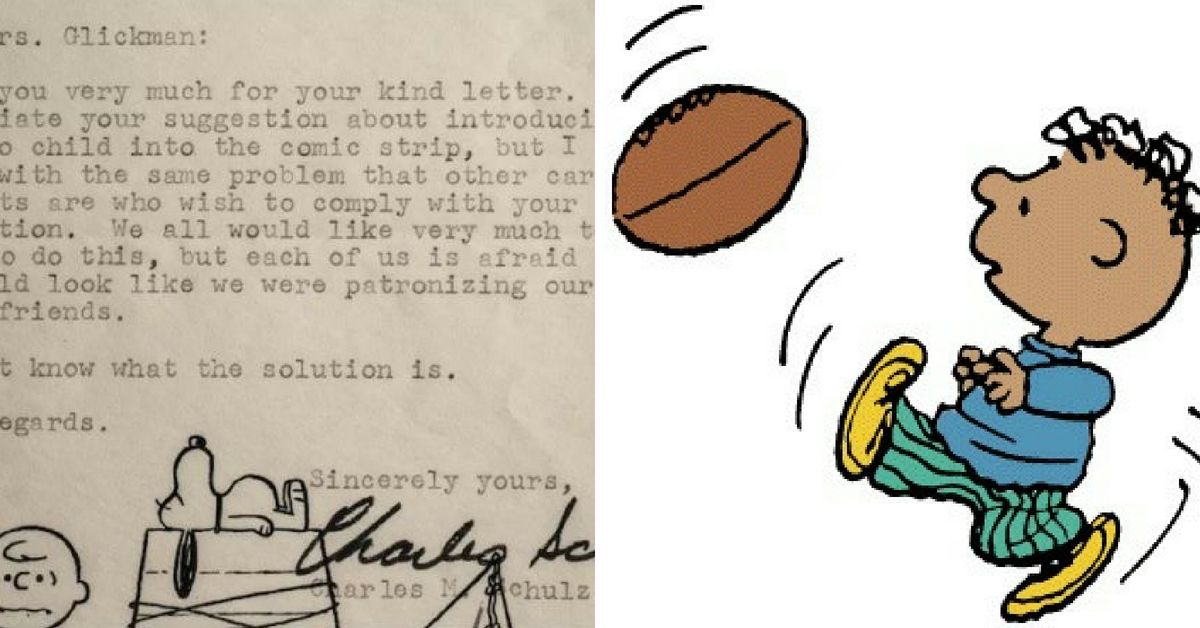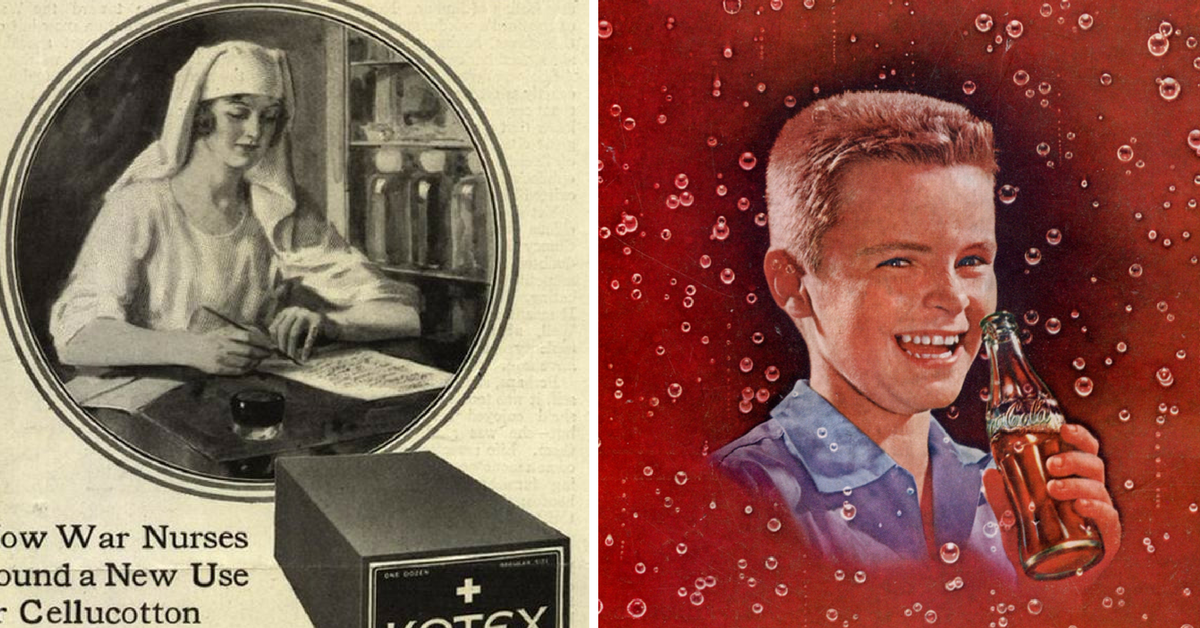You could never guess from looking at him, but Charlie Brown's classmate Franklin turned 50 earlier this week.
While it's quite a milestone, Franklin is actually one of the youngest Peanuts characters, and he has a surprisingly touching backstory that few readers know.
A Small Request
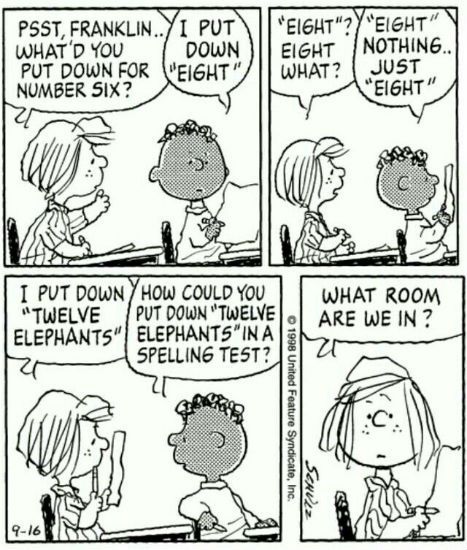
Franklin first appeared in the Peanuts strip on July 31, 1968.
It was a tumultuous time in America, marked by division and nationwide rioting. Martin Luther King had been assasinated in April, and Robert Kennedy was killed in June.
In April, a schoolteacher from Los Angeles named Harriet Glickman wrote to Peanuts cartoonist Charles Schulz, hoping he could help change the country for the better.
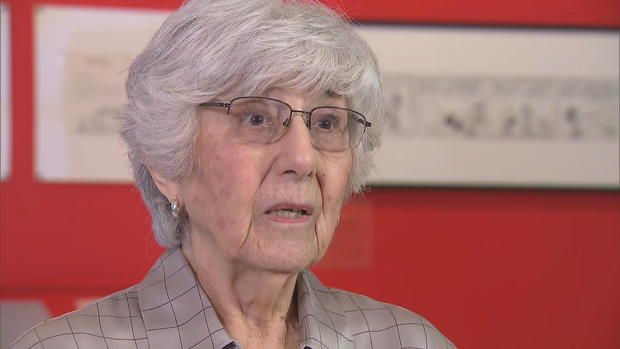
Glickman was a mother to three children, and fed up with the bad news she read every morning.
Her idea was that Schulz could introduce black characters - or "Negro children" as she wrote at the time - to send a message of racial harmony to his readers.
"Since the death of Martin Luther King, I've been asking myself what I can do to help change those conditions in our society which led to the assassination and which contribute to the vast sea of misunderstanding, fear, hate and violence," her letter read.

"I'm sure one doesn't make radical changes in so important an institution without a lot of shock waves from syndicates, clients, etc. You have, however, a stature and reputation which can withstand a great deal."
The idea seemed like hit, except that Schulz was not interested... at first.
A Little Motivation
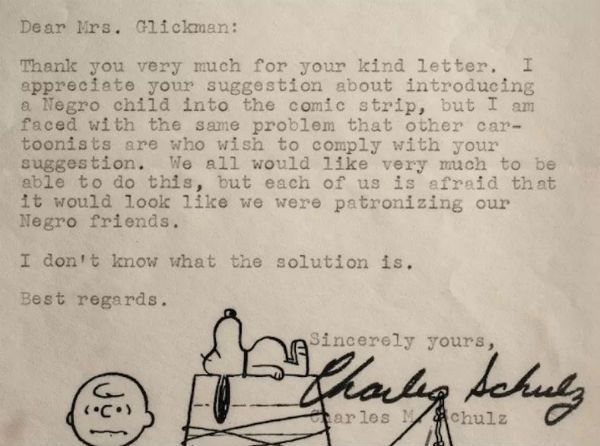
Schulz wrote back to Glickman saying she had a novel idea. But he worried introducing the characters would seem like he was "patronizing our Negro friends."
To her credit, Glickman refused to take no for an answer.
She kept trading letters with Schulz, and convinced her friends to join her campaign. One of them, space engineer Kenneth C. Kelly, shared what seeing a black character would mean to his family:

"Firstly, it would ease my problem of having my kids seeing themselves pictured in the overall American scene," he wrote.
"Secondly, it would suggest racial amity in a casual day-to-day sense."
Finally, in July, Glickman got the answer she was waiting out for, a letter from Schulz telling her to look out for a new character later that month.
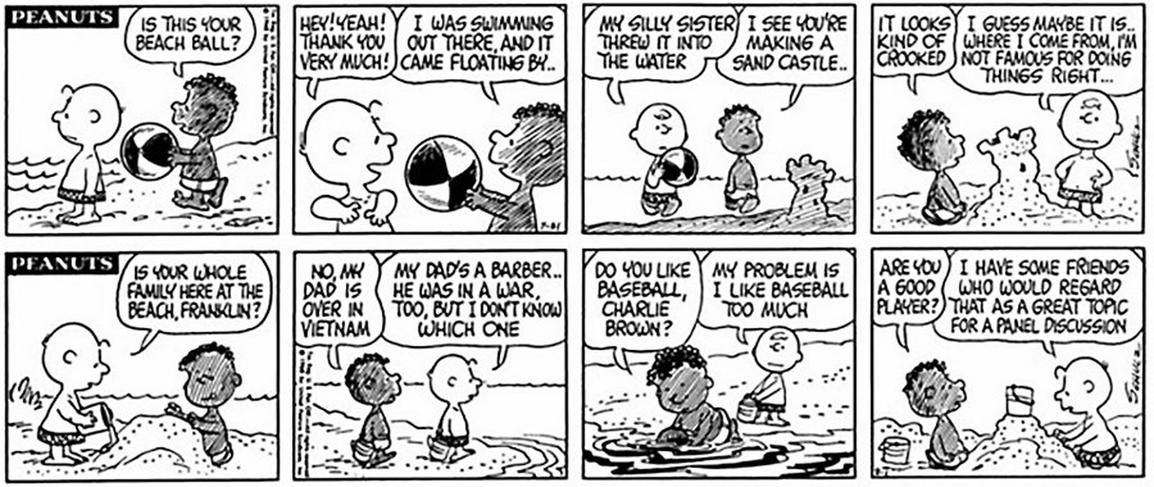
In his first appearance, Franklin helps Charlie Brown build a sandcastle as they talk about their families. It was a small, but very meaningful moment.
"I was like 'Wow!' This changed everything."

Schulz remembered getting "at least one" complaint from an editor in the South after Franklin debuted.
"Another editor protested once when Franklin was sitting in the same row of school desks with Peppermint Patty," he remembered in an interview, "and said, 'We have enough trouble here in the South without you showing the kids together in school.'"
He also remembered arguing with Larry Rutman, the president of his United Features syndicate.
"I finally sighed and said, 'Well, Larry, let's put it this way: Either you print it just the way I draw it or I quit. How's that?' So that's the way that ended."

But mainly, Franklin was welcomed to the strip with open arms. Robb Armstrong, who would grow up to write the Jumpstart comic, remembers seeing Franklin for the first time as a young boy.
"My mom is like, 'Look that's a little black character in Peanuts.' I was like 'Wow!' This changed everything."
After meeting Schulz later in life, the character was given the last name "Armstrong," after Robb, which he called "a great honor."

These days, most readers have forgotten Franklin's controversial and historic debut, but maybe that's for the best.
Now, he's often seen as the "boring character" of the strip. He's friendly, a good student, and athletic, without being neurotic like Linus, Lucy, or Charlie Brown himself.
But with a cast of friends like Charlie Brown's, it's important to have at least one well-adjusted character.
Did you know about Franklin's interesting history?
Here are more surprising behind-the-scenes stories:
